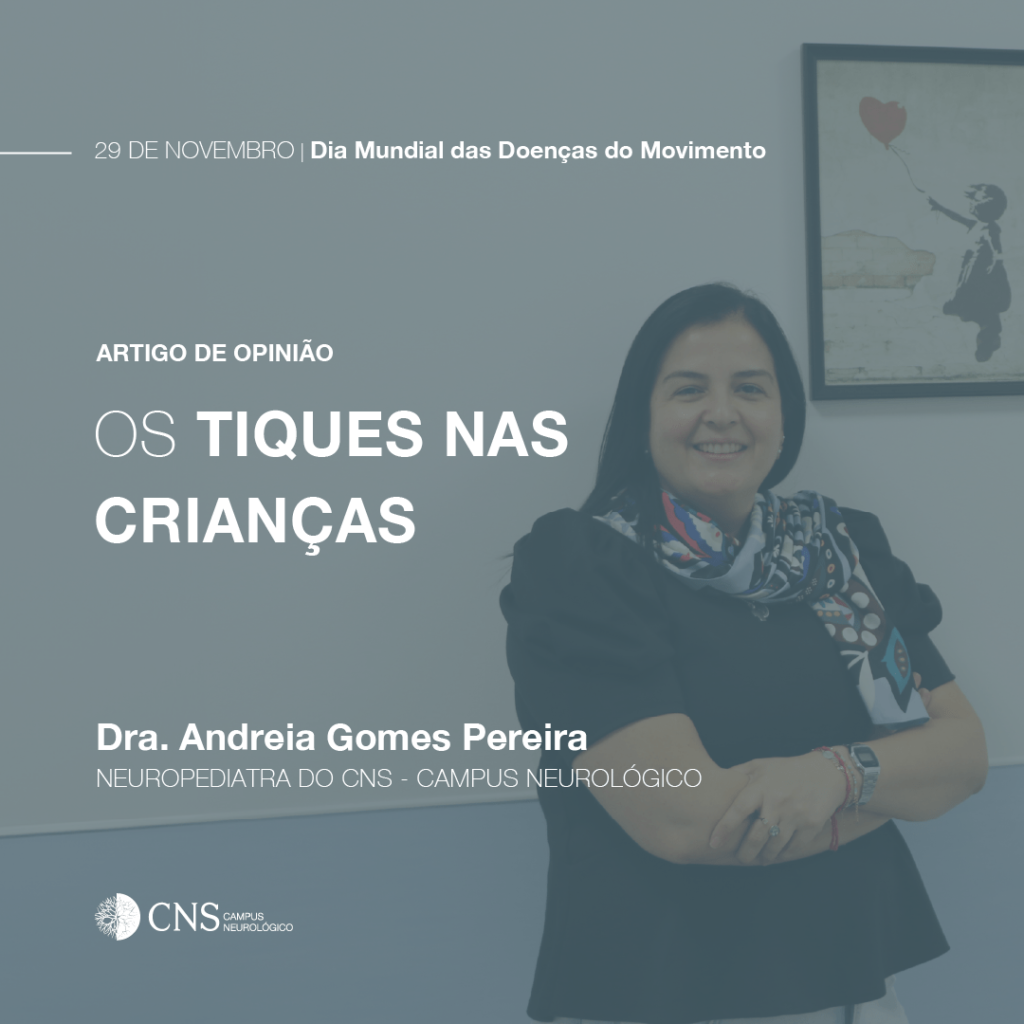In pediatric age, the most frequent movement disorder is tic disorder, which includes Gilles de la Tourette Syndrome, also known as Tourette’s Syndrome.
Tics are involuntary, and can be motor or vocal (or phonic). Motor tics are rapid, recurrent, and non-rhythmic movements. Vocal tics are sounds or words often repeated uncontrollably. They can also be classified as simple, purposeless, involving only one muscle group or body part, or complex when they involve multiple muscle groups, coordinated, and sometimes with a purpose.
Motor tics can manifest in various ways, such as blinking, moving the head, shaking the arms, jumping, touching objects or people, moving the entire body. Vocal or phonic tics can be recognized, for example, by clearing the throat, clicking the tongue, sniffing, grunting, imitating animal sounds, or inappropriate or out-of-context words or phrases.
Usually, tics appear between the ages of 4 and 12, become more severe in adolescence, and can be transient (duration < 1 year) or evolve into chronicity (duration > 1 year). Generally, motor and vocal tics change in frequency, evolve in complexity, and can alternate between periods of greater or lesser intensity. Vocal tics may appear about 1 to 2 years after motor tics.
The presence of chronic motor and vocal tics characterizes a neurological disorder called Gilles de la Tourette Syndrome (GTS). Symptoms usually appear between 5 and 18 years, are more frequent in males, and there is a family history of GTS in 10-15% of children.
The diagnosis of tics and GTS is made by a pediatric neurologist, based on the clinical history provided by parents and observation during consultation (although children may suppress tics when they feel observed). Complementary tests are usually not necessary for diagnosis since it is based on clinical criteria, but they are requested in some patients to exclude other neurological pathologies that may present with movement disorders, namely tics.
Evaluation and diagnosis are essential for excluding the most frequently associated comorbidities with tic disorders (particularly with GTS), namely Attention Deficit Hyperactivity Disorder (ADHD), Obsessive-Compulsive Disorder (OCD), Autism Spectrum Disorder (ASD), sleep disorders, specific learning difficulties, headaches, psychiatric disorders such as anxiety and depression.
Intervention in tic disorder involves the presence of neurologists, psychologists, therapists, and psychiatrists, based on psychoeducation and cognitive-behavioral therapies (psychotherapy, relaxation training, hypnosis, …). Occasionally, pharmacological therapy may be necessary to control the tics, but this decision is always individualized and made in conjunction with the family. Indeed, the family is a key element in addressing tic disorders, as there are some strategies to apply in the child’s daily routine that help reduce the intensity and frequency of tics. These include:
- learning to recognize the tics, the situations that trigger them, avoiding them, or using distracting factors;
- avoiding stress and anxiety situations;
- maintaining good sleep hygiene;
- engaging in physical exercise;
- dedicating time to sports, musical hobbies.
Regarding the prognosis of this disorder, most children with simple motor tics have a complete decrease in symptoms, while children with GTS may retain symptoms into adulthood. However, depending on the severity of the symptoms, most people with motor tics can lead a normal life in society.
Dr. Andreia Gomes Pereira
Pediatric Neurologist
CNS – Campus Neurológico
